The best camera for beginners 2024: top picks for photo and video novices
Our guide to the best camera for beginners
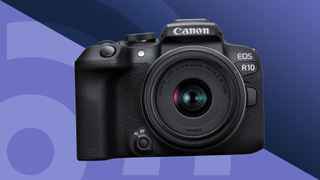
1. The list in brief
2. Best overall
3. Best value
4. Best everyday
5. Best for video
6. Best mid-range hybrid
7. Best retro
8. Best instant
9. Best DSLR
10. Best compact
11. How to choose
12. How we test
The best camera for beginners isn’t necessarily a smartphone. Whether you want a bigger sensor, superior handling or simply to shoot with a viewfinder, we’ve reviewed all of the top entry-level options. After countless hours of testing, we’ve ranked our favorite beginner cameras in the comprehensive list below.
We think the best camera for most beginners right now is the Canon EOS R10. One of the main reasons is its class-leading autofocus, which it's inherited from much pricier cameras. But it's also equipped with good burst shooting speeds, a lightweight build and accessible controls, which give you the mirrorless flexibility to improve as a photographer.
The EOS R10 isn't the only choice you should consider, though. If lens options are high on your list, it’s hard to beat the Fujifilm X-T30 II. Or if you plan to shoot video, the Sony ZV-E10 is a pocket filmmaking tool worth your attention. If you're on a tight budget, consider of the best cheap cameras or look at second-hand prices for the predecessors of cameras in our list, such as the original Fujifilm X-T30.
Whatever your needs and budget, you’ll find some of the best point-and-shoot cameras in our list, alongside mid-range models that give beginners room to grow. We’ve tested a huge variety of beginner cameras to help you find the right choice for your needs, while our built-in price comparison tool will serve up all of the latest available discounts, too.

Tim is TechRadar's Cameras editor, with over 15 years in the photo video industry and most of those in the world of tech journalism, Tim has developed a deeply technical knowledge and practical experience with all things camera related. He notes, "the smaller overall system size of models like the Canon EOS R10, Olympus OM-D E-M10 Mark IV and Fujifilm X-T30 II will likely be more suitable than a full-frame camera for those who are just starting out on their photography journeys."
The quick list
Want a shortcut to the best beginner camera for your needs? Use our summary round-up below to quickly identify your ideal entry-level camera, then jump down to our full write-ups using the links beneath each entry.
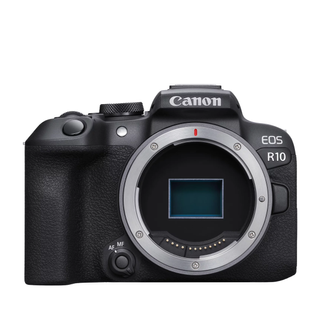
The best beginner camera overall
A compact build, good handling and modern autofocus make the EOS R10 a great value powerhouse for beginners.
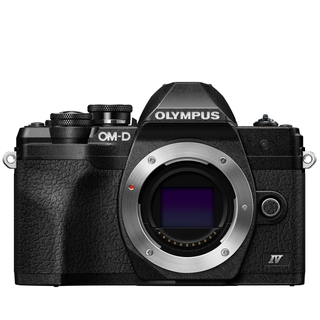
The best value beginner camera
With a capable 20MP Micro Four Thirds sensor and impressive image stabilization, the Mark IV is superb little stills camera.

The best everyday beginner camera
Combining solid specs with a stylish design that’s easy in the hand, the X-T30 II is fantastic all-rounder for daily shooting.
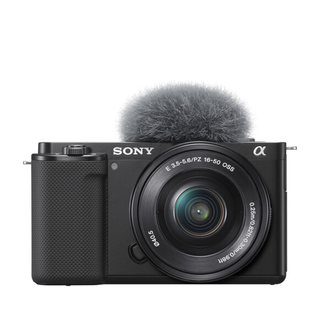
The best beginner camera for video
Small but powerful, the ZV-E10 is a versatile vlogging tool for newbies who want to hone their video skills for a fair price.

The best mid-range hybrid for beginners
Accessible handling and automated shooting modes make the X-S20 a great mirrorless hybrid for beginners to learn and grow with.

The best retro camera for beginners
Its looks alone won’t improve your shooting, but the Nikon Z fc offers a stunning blend of retro style and mirrorless power.
Load the next 3 products...
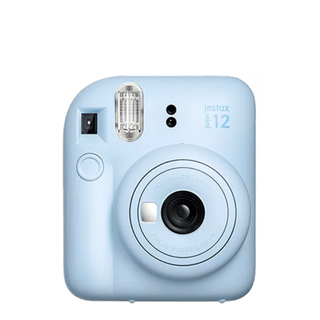
The best instant camera for beginners
Simple to use and fun to shoot with, the Instax Mini 12 is perfect for trying your hand at point-and-shoot instant photography.
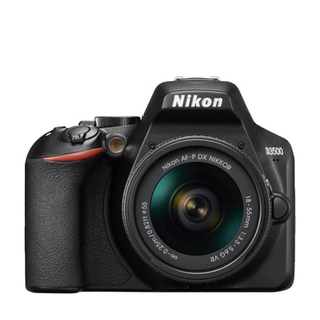
The best beginner DSLR camera
Compact for a DSLR, the Nikon D3500 is affordable, intuitive to use, produces excellent images and lasts for ages on one charge.

The best compact camera for beginners
Pairing a pocket-friendly design with 15x optical zoom and a 1.0-inch sensor, the TZ200 is a great upgrade from your smartphone.
The best beginner cameras in 2024
Why you can trust TechRadar
Below you'll find full write-ups for each of the best beginner cameras in our list. We've tested each one extensively, so you can be sure that our recommendations can be trusted.
The best beginner camera overall
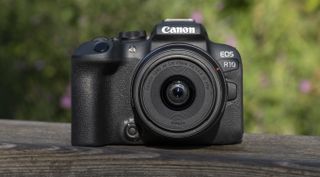
Specifications
Reasons to buy
Reasons to avoid
✅ You like photographing sports and wildlife: It's a pricier option in this list but the R10 comes with impressive action specs and autofocus performance.
✅ You want decent video quality too: Primarily a a stills camera, the EOS R10 also shoots crips 4K video with auto color.
❌ You want a good choice of lenses: Years after Canon's first RF-S cameras and there's a distinct lack of native APS-C lenses.
❌ You want a vlogging camera : Video image quality is lovely, but the EOS R10 lacks in-body stabilization and a headphone jack.
Setting a fresh bar for entry-level camera performance, the Canon EOS R10 comfortably eclipses contemporary smartphones. Equipped with a speedy Digic X processor, this mirrorless model benefits from the latest autofocus abilities.
In testing, we found its AF tracking impressively intelligent and intuitive for beginners. Claimed burst speeds of 15fps with the mechanical shutter also proved accurate during our time with the R10. Together, those skills mean it’s fast enough to capture fleeting action, which you can’t say of every beginner camera. What’s more, the lightweight chassis is comfortably familiar even for novices, with an articulating touchscreen offering useful accessibility.
The compact form factor makes it easy to wield when trying new techniques, while dual control dials mean it’s simple to tweak settings. A lack of in-body image stabilization does limit the R10’s abilities after dark, but image quality is decent enough, with plenty of detail to pull out of the shadows. So it’s not a revolutionary model, but its specs and control setup put the R10 top of our list for beginners. Here’s hoping Canon adds more native APS-C lenses to sweeten the deal.
Read our in-depth Canon EOS R10 review
The best value beginner camera
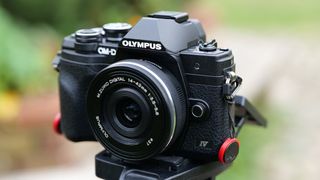
Specifications
Reasons to buy
Reasons to avoid
✅ You're going to buy accompanying lenses: With more than 10 years of investment there's literally hundreds of native micro four thirds lenses to choose from.
✅ You don't like the idea of a tripod: Decent in-body image stabilization can keep your handheld shots sharp even in low light.
❌ You want a truly hybrid camera: You'll get decent video quality from the E-M10 IV, but there's a few missing features for vlogging.
❌ You want the very best autofocus : Phase detect autofocus performs better for photo and video than the contrast detection ssystem used here.
If you’re looking for a simple, compact mirrorless camera that consistently captures attractive images, the OM-D E-M10 Mark IV definitely deserves a spot on your shortlist. Designed primarily for smartphone switchers, its ergonomic grip, approachable button layout and handy flip-down touchscreen give it good versatility, without cluttering the classically styled shell.
It might lack some of the more advanced features of its pricier rivals – including microphone and USB-C ports – but it does a brilliant job as a stills camera. In fact, we found that it's the most photo-centric camera in its category, delivering great stills during our tests.
An Advanced Photo mode makes it easy to have a go at advanced techniques such as long exposures, while the in-body image stabilization system – borrowed from the flagship E-M1 – is superb. The sensor resolution is decent at 20.3MP and, because it’s a Micro Four Thirds camera, it has one of the widest lens catalogues on the market. It might not grab headlines, but the Mark IV is a fantastic first camera for beginners.
Read our in-depth Olympus OM-D E-M10 Mark IV review
The best everyday beginner camera

Specifications
Reasons to buy
Reasons to avoid
✅ You want a low-cost retro camera: If you love the Fujifilm retro look, the X-T30 II is your entry point.
✅ You like the thought of high quality lenses: Fujifilm has made some amazing X-system lenses for a range of budgets and scenarios.
❌ You already own the Fujifilm X-T30: Our review says the second-gen model is a modest update with little reason to upgrade from the X-T30.
❌ You have a little extra to spend : Bang for buck, we think the X-S10 is a better deal (not the X-S20, that costs a lot more).
Fujifilm’s X-T30 was already a tempting mid-range option for photography novices, but this second edition augments the offering with a handful of enhancements. You won’t see these tweaks at a glance: the X-T30 II uses the same chassis and retro shell as its predecessor, which is no bad thing. It’s an attractive design that’s lovely for beginners to get to grips with. The touchscreen is still tilt-only, but it’s a little sharper than before.
In testing, we found that the X-T30 doesn’t transform the performance formula of the first version. Using the same APS-C sensor and 425-point AF system, it still balances capable shooting skills with compact proportions.
That said, a new algorithm tracks moving subjects with greater accuracy. While it’s not perfect, we found that it performs well when locked on to predictable subjects. The sensitivity of focus points as also been improved, and we found the X-T30 II did well to pick out details even in lower lighting.
It’s not worth upgrading from the original, but for first-time buyers, the X-T30 II is capable all-rounder with the skills to help your photography grow.
Read our in-depth Fujifilm X-T30 Mark II review
The best beginner camera for video
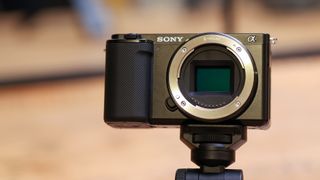
Specifications
Reasons to buy
Reasons to avoid
✅ You want a low-cost retro camera: If you love the Fujifilm retro look, the X-T30 II is your entry point.
✅ You like the thought of high quality lenses: Fujifilm has made some amazing X-system lenses for a range of budgets and scenarios.
❌ You'll only use one lens: Sony also has the all-in-one ZV-1 / ZV-1 II vlogging cameras in its range.
❌ You little shooting slow motion video: The ZV-E10 only shoots 4K video up to 30fps, whereas other models can do 4K 60fps.
A powerful vlogging tool with compact proportions, the Sony ZV-E10 is a fantastic video-focused hybrid for fledgling content creators. Lightweight and pocket-friendly, it works best when paired with one of Sony’s many compact lenses.
In testing, we found that its 24.2MP APS-C sensor shoots sharp 4K footage and impressively detailed stills, aided by a fast 425-point autofocus system. Its hot-shoe mount and audio ports offer welcome versatility when it comes to expanding your shooting setup, too.
A touch-optimized menu system would make the Sony ZV-E10 more user friendly, and the lack of a viewfinder felt like a limitation for photographers. That said, its articulating touchscreen is still a useful addition for framing on the fly, and the camera’s physical control interface is accessible in the hand.
Our review revealed few drawbacks for beginners. There is some rolling shutter when panning, and 4K recording tops out at 30p. But while it’s not a perfect camera, a generous feature set – including plug-and-play computer connectivity for live-streaming – makes the ZV-E10 a compelling choice for learners interested in videography.
Read our in-depth Sony ZV-E10 review
The best mid-range hybrid for beginners
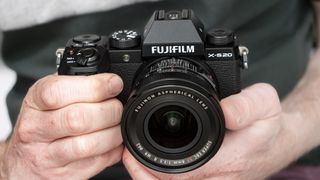
Specifications
Reasons to buy
Reasons to avoid
✅ You need a weekend camera: If you plan a weekend of moderate use, the X-S20's battery should last the whole distance.
✅ You want versatile and high resolution video: The video spec of the X-S20 is almost overkill for beginners; 6K open gate for multi aspect ratios.
❌ You're on a budget: It's much pricier than the X-S10 which has the same design and many identical features.
❌ You want a head-turning snapper: The X-T30 II above is a more stylish camera if you're into the old school looks.
If you’re a beginner looking for a long-term camera, we think the Fujifilm X-S20 is a fantastic choice. It's the priciest camera in this guide and a big mark up from the X-S10 which offers the same photo quality and the same beginner-friendly design and handling: simplified dials make the X-S20 straightforward for learners to operate, while offering enough manual control to keep you interested as your creativity and skills grow. However, the X-S20 much better video performance and battery life.
We also think its enhanced Auto shooting mode is a great feature for novices. It automatically detects and tracks subjects, as well as selecting scene settings based on what you’re shooting. In practice, this made images more vivid with no extra effort. Image quality is reliably good, courtesy of Fujifilm’s proven 26.1MP X-Trans CMOS 4 sensor. If you plan to shoot video too, its 6K/30p 4:2:2 10-bit recording won’t hold you back.
In our review, we did wish that Fujifilm had weather-sealed the X-S20. And there’s no escaping that it represents a significant outlay for casual content creators. But features such as in-body image stabilization and a dedicated vlog mode with easy presets make the X-S20 a very capable first hybrid.
Read our in-depth Fujifilm X-S20 review
The best retro camera for beginners
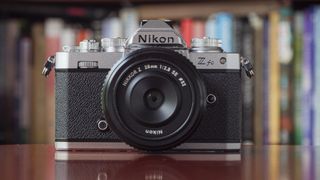
Specifications
Reasons to buy
Reasons to avoid
✅ You want the best-looking beginner camera: The Z fc is head-turning gorgeous. Enough said.
✅ You'd like to eventually take manual control: For the price, no other mirrorless camera has the number of exposure dials for direct manual exposure control.
❌ You need a rugged camera: Beginner cameras aren't usually tough, and you'll need to really look after your Z fc.
❌ You'd like a developed system: Nikon hasn't put the same energy into developing its APS-C system with new lenses like it has full-frame.
At its heart, the Nikon Z fc is the same as the Nikon Z50. That’s good news, because its 20.9MP APS-C sensor and hybrid autofocus system are capable of producing detailed stills and solid 4K footage at 30fps. What sets the Z fc apart is its body, which has been designed in honor of the classic Nikon FM2. It has broadly the same dimensions as its analogue ancestor and no shortage of retro style to suit its Eighties origins.
Those thoughtful throwback cues mean the Nikon Z fc is a distinctive camera. It’s also even better for beginners than the Z50, thanks to a vari-angle display which makes creative framing more flexible. It’s not weather-sealed (not that you’d want to risk using such a stunning camera in inclement weather) and it also lacks the deep grip of the Z50.
If you regularly fiddle with exposure settings, we found the dedicated exposure dials to be a more intuitive method than generic command dials, once you have the hang of it. The dedicated dials for ISO, shutter speed and exposure compensation look great too – it's what has set Fujifilm apart before. Native lenses also offer a lens control ring that can be customized between focus and aperture control. Combine that with the Z fc's auto ISO with shutter speed control, you'll be good to go in no time, accommodated to your shooting style.
Read our in-depth Nikon Z fc review
The best instant camera for beginners
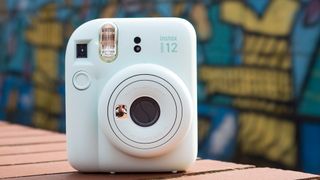
Specifications
Reasons to buy
Reasons to avoid
✅ You love vintage prints: Fujifilm Instax prints have a lovely vintage feel to them.
✅ You want physical prints: Instant cameras encourage you to capture and share the moment in a way digital cameras don't.
❌ You'd like a retro instant camera: There are other Instax cameras for similar money that have the old school looks.
❌ You prefer Instagram-style prints: Instax Mini film is cheap but it's half the size of Instax square and prints can feel cramped.
If you want to experience the no-frills fun of instant photography, the Fujifilm Instax Mini 12 is our favorite instant camera. Basic and affordable, the Mini 12 makes it easy for anyone to frame and shoot vibrant prints. Because of this, it’s a great choice for beginners who like the idea of creating vintage party snaps.
Although we found its handling a little slippery in testing, it’s still a comfortable and straightforward camera to use, with a simple point-and-shoot interface. It turns on intuitively with a twist of the lens, while pulling the lens out engages close-up mode. Thanks to parallax correction, the viewfinder now gives a more accurate picture of what will be printed, compared to the Instax Mini 11.
Based on our tests, the Mini 12 does have a habit of overexposing images in bright conditions. Some users may also find its prints a little on the small side. But given the lower cost of Instax film refills compared to rivals, the Mini 12 is a more accessible instant camera for learners – and one that produces richly colorful prints.
Read our in-depth Fujifilm Instax Mini 12 review
The best beginner DSLR camera
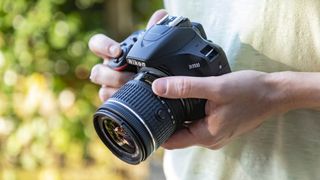
Specifications
Reasons to buy
Reasons to avoid
✅ You're looking to learn photography: DSLRs are excellent and cost-effective for learning the ropes with photography.
✅ You like a camera that lasts: The D3500 has decent build quality and handling, including excellent battery life.
❌ You want a camera for the future: The DSLR hey day was last decade and mirrorless is where new tech can be found.
❌ You'd like a discreet camera: DSLRs like the D3500 sit great in the hand but they're hardly subtle.
The Nikon D3500 is the only DSLR in this list. Why? Well, these cameras – which differ from mirrorless rivals with their optical viewfinders – are slowly being phased out by many of the leading camera manufacturers, in favor of more advanced mirrorless models. But if photography is your main pursuit and video specs really aren’t important, the Nikon D3500 is a fantastic, low-budget beginner camera choice. Housing a top quality 24.2MP APS-C sensor, the D3500 can capture detailed, tone-rich images.
At a glance it appears low on features, but the Nikon D3500 includes a super handy dedicated Guide Mode that sits on its dial. Guide Mode, a basic virtual photography tutor, has proven to be a valuable feature for beginners during our testing. If you're a noice, trust that it will walk you through all of the camera’s functions, including in-camera photo editing. It can be tailored to provide full assistance, or allow for more advanced control as you grow in confidence and experience.
There are two kit lenses available with the D3500, but we recommend that you opt for the DX 18-55 VR kit lens. VR stands for Vibration Reduction and it costs a fraction more than the other option. But with VR stabilization enabled, you’ll get better shots handheld, especially in low-light conditions.
Read our in-depth Nikon D3500 review
The best beginner compact camera for beginners
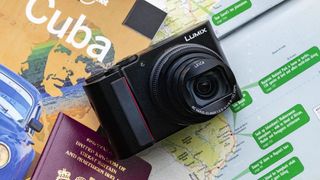
Specifications
Reasons to buy
Reasons to avoid
✅ You'd like a versatile pocket camera: Small, pocketable and with an excellent zoom range – this is one for your travels.
✅ You shoot in bright light: The ZS200 / TZ200 has a dinky built-in viewfinder handy for clear viewing in sunny weather.
❌ You want a low cost compact camera: Packed with features, the ZS200 / TZ200 costs a pretty penny for a compact.
❌ You prioritize quality over versatility: As a superzoom with smaller image sensor, image quality doesn't match the best mirrorless cameras in this guide.
If you'd rather learn your photographic craft on a compact camera, rather a larger mirrorless model or DSLR, then the Lumix ZS200 (or TZ200 as it's known outside the US) is the best option around. On test, it delivered nicely detailed shots that not only have a natural yet bright and vibrant look, but can also stand up very well to cameras that enjoy larger sensors.
It might look like a point-and-shoot camera, but the ZS200 combines a super-versatile lens (with 24-360mm focal length), 1-inch sensor and a wide range of manual controls for full creative control. Thanks to control dials on the top and around the barrel of the lens, you can quickly adjust settings like aperture or shutter speed while out on the street.
And while the electronic viewfinder may be small, it offers a solid 2.33-million dot resolution and is another big boon over phone cameras. Throw in 4K video and an intuitive touchscreen interface, and the ZS200 makes a fine beginner camera for those who manual controls in something that's small and discreet.
Read our in-depth Panasonic Lumix ZS200 / TZ200 review
How to choose the best beginner camera for you
Here are five things to look for when choosing a beginner camera:
1) Resolution
Referred to as “megapixels” or “MP”, resolution indicates the maximum size of images that a camera can capture. The higher the number, the higher the resolution. For this reason, a lot of camera brands use megapixels to attract customers, but resolution isn’t the whole story. 12MP is more than enough to produce a high quality print at A3 paper size.
2) Design and build
As the cliché goes, the best camera is the one you have with you – which means there’s no point in buying one that you don’t want to take out and use frequently. Perhaps you want a larger camera with physical controls. Or maybe a smaller camera with a touchscreen would make you feel more at home.
3) Sensor size
Not all sensors are created equal. Unlike megapixel counts, the larger the sensor, the better the image quality – generally speaking. Smaller sensors aren’t as good at gathering light, which means more noise (image grain) will show up in images captured in low-light. Larger sensors typically produce more attractive tones and depth. But they also come at a cost; both financial, and in terms of the camera system's size. The narrower angle of view of smaller sensors can also be beneficial if you're shooting distant subjects, as the diagram above shows.
4) Connectivity
All of the best beginner cameras offer some way to connect to your smart device or favorite social media apps. The cameras in this list all benefit from Wi-Fi, Bluetooth or NFC connectivity, or a combination of all three.
5) Lenses
A decent quality lens is critical for capturing good images. All of the best beginner cameras come with a kit or fixed lens, which offer a standard focal length (zoom range). Interchangeable lens cameras come with kit lenses, which can be changed to suit your needs. Fixed lens cameras appeal to people who don’t want to carry extra lenses.
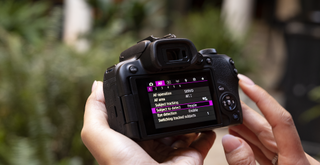
What camera should a beginner start with?
As you’ll see in the list above, there’s no single right answer when it comes to which camera a beginner should start with. Much will depend on what type of technology you’re already familiar with, as well as how you like to shoot. Some learners like the certainty of physical buttons, for example, while smartphone users might prefer a camera with a touchscreen interface. Luckily, there are plenty of both styles available – and the best beginner cameras tend to offer a combination of control systems, like the Fujifilm X-T30 II.
DSLR cameras are often easy cameras for beginners to use and adapt to. Because they are bigger than most compact and mirrorless models, there’s more space to spread out buttons on the body (and to label them for ease of understanding). Plus DSLR cameras tend to feature large, sculpted grips for more comfortable handling, which is important if you’re planning to get a lot of practice in. Take a look at the Nikon D3500, for example.
Equally, some beginners will find that a smaller camera is easier to get to grips with. Even if you’re only just starting to take photography more seriously, there’s a good chance you might have used a point-and-shoot compact camera at some point in your life. If so, you might find that a premium compact like the Panasonic Lumix ZS200 / TZ200 provides a familiar experience. And because there are no interchangeable lenses to worry about, you can focus on improving other aspects of your photography, such as framing.

How we test beginner cameras
While most of the cameras in this list are relatively affordable compared to the latest professional mirrorless models, they're still a big investment – so every camera in this list have been tested extensively by us to make sure it deserves its spot. For this particular guide, we've also approached the cameras from the point of view of someone starting out in photography or filmmaking, taking into account user interfaces, handling and general ease of use.
The latter are particularly important factors for starter cameras, but we've tested all the fundamentals too, so you can be sure each model has the capacity to grow with you. These days, real-world tests are the most revealing way to understand a camera's performance and character, so we focus heavily on those, along with standardized tests for factors like ISO performance.
After testing the camera's start-up speed, we'll move onto performance. We use a formatted SD card and shoot in both JPEG and raw (if available). For burst shooting tests, we dial in our regular test settings (1/250 sec, ISO 200, continuous AF) and shoot a series of frames in front of a stopwatch to see if it lives up to its claimed speeds. We'll also look at how quickly the buffers clears and repeat the test for both raw and JPEG files.
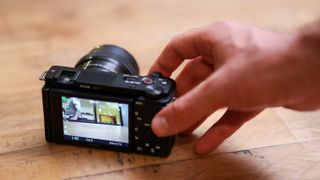
Where applicable, we also test the camera's different autofocus modes in different lighting conditions (including Face and Eye AF) in single point, area and continuous modes. We also shoot a range of photos of different styles (portrait, landscape, low light, macro/close-up) in raw and JPEG to get a sense of metering and its sensor's ability to handle noise and resolve fine detail.
If the camera's raw files are supported by Adobe Camera Raw, we'll also process some test images to see how we can push areas like shadow recovery. And we'll also test its ISO performance across the whole range to get a sense of the levels we'd be happy to push the camera to.
Battery life is tested in a real-world fashion, as we use the camera over the course of the day with the screen set to the default settings. Once the battery has reached zero, we'll then count the number of shots to see how it compares to the camera's CIPA rating. Finally, we test the camera's video skills (where necessary) by shooting some test footage at different frame rates and resolutions, along with its companion app.
We then take everything we've learned about the camera and factor in its price to get a sense of the value-for-money it offers, before reaching our final verdict.
Get daily insight, inspiration and deals in your inbox
Get the hottest deals available in your inbox plus news, reviews, opinion, analysis and more from the TechRadar team.

Tim is the Cameras editor at TechRadar. He has enjoyed more than 15 years in the photo video industry with most of those in the world of tech journalism. During his time as Deputy Technical Editor with Amateur Photographer, as a freelancer and consequently editor at Tech Radar, Tim has developed a deeply technical knowledge and practical experience with cameras, educating others through news, reviews and features. He’s also worked in video production for Studio 44 with clients including Canon, and volunteers his spare time to consult a non-profit, diverse stories team based in Nairobi. Tim is curious, a keen creative, avid footballer and runner, and moderate flat white drinker who has lived in Kenya and believes we have much to enjoy and learn from each other.
- Chris Rowlands
- Mark WilsonSenior news editor
